If you’re any kind of tea enthusiast, you know that whether it’s for drinking pleasure or an array of health benefits, tea is a beverage no one should have to live without.
When it comes to cup notables, there are two main types – those prepared using loose leaf tea and those prepared using the more commercially available bagged varieties.
But the difference doesn’t end at flavor.
The intricate details between these variants can mean consuming a better experience each time… but what do you need to be aware of when comparing them?
Let’s take a close look at the differences between loose-leaf and teabag tea so that no matter what your preference is, you can craft perfect cups every time.

What is Loose Leaf Tea?
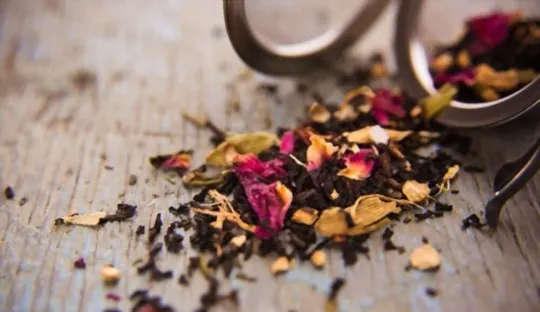
Loose leaf tea is a refreshing and wholesome way to enjoy a luxurious and comforting cup of tea.
Unlike tea bags, which are pre-packaged and require boiling water to infuse the tea leaves, loose leaf tea is a form of tea that is packaged in its natural and unadulterated form without being crushed, twisted, or flattened.
Instead, the tea leaves are free to flow and expand, providing a unique and full-bodied flavor that is unrivaled in the tea world.
Additionally, loose leaf tea is versatile in that it can be brewed in a variety of ways, from steeping in a traditional teapot, to using a strainer to brew large quantities, to using a French press.
Whether you’re a seasoned tea connoisseur or a novice tea drinker, loose leaf tea is a delightful way to enjoy the diverse and rich world of tea.
What are Tea Bags?
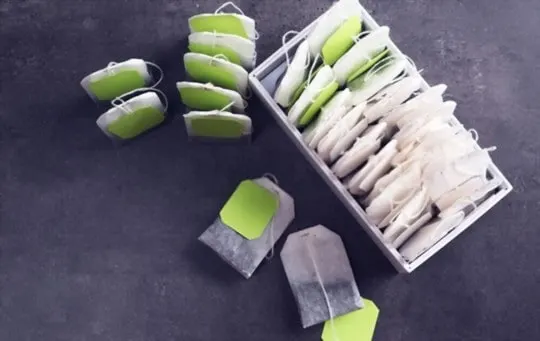
Tea bags are a staple in many households around the world.
They are small, porous bags that contain varying blends of dried tea leaves and herbs.
The convenience and ease of use of tea bags have made them a go-to option for tea lovers who want a quick and hassle-free cup of tea.
The tea inside the bag is steeped in hot water, allowing it to infuse the water with its flavor and aroma.
Tea bags come in a range of flavors, from classics like Earl Grey and English Breakfast, to more exotic blends like chai and fruit-infused teas.
However, not all tea bags are created equal.
Some brands use lower quality tea leaves, while others use expensive, high-quality teas.
Overall, tea bags offer an accessible and cost-effective way to enjoy a cup of tea without the need for complicated steeping methods or specialized tea-making knowledge.
Differences Between Loose Leaf Tea and Tea Bags
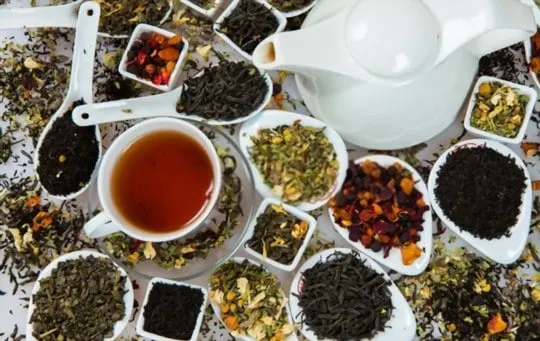
In comparison, the two tea forms differ in multiple ways.
Overall loose leaf varieties offer a complete taste adventure resulting from its unique character and high-quality ingredients compared to conventional teabags that have reduced quality due to their chopped leaves.
When you choose loose-leaf over teabag editions, you’re investing not only in your own satisfaction but also supporting more sustainable practices for those who grow or harvest them.
Quality of Tea Leaves Used
Using high-quality tea leaves is crucial to brewing a flavorful cup of tea.
Loose leaf tea offers a higher grade of tea leaves than those usually found in tea bags.
This is because loose leaf teas are composed of unbroken or slightly broken whole leaves, whereas tea bags typically contain fannings and dust.
These small, fragmented pieces of tea tend to have less flavor, aroma, and overall quality since they have been exposed to more air and processing than whole leaf teas.
As a result, opting for loose leaf tea can often lead to a richer, more complex taste profile in your cup.
Additionally, the use of high-quality loose leaf teas also makes it easier to appreciate the subtle differences between various teas’ characters.
Diverse options ranging from white, green, black, oolong and herbal teas are available as loose leafs which would give different unique brewed outcomes each time one is used.
Furthermore, when buying loose-leaf teas in bulk form you can save money by reducing packaging and labor costs that come with individually wrapped teabags or sachets.
In summary, the quality difference alone should make choosing carefully selected and high-quality loose-leaf teas worthwhile for any tea enthusiast seeking a delightful experience with every sip.
Brewing Method and Time
The process of steeping loose leaf tea differs from that of tea bags in both method and time.
Loose-leaf tea requires a brewing device, such as an infuser or strainer, to hold the leaves while they steep.
The optimal amount of time varies by type and should be monitored closely to avoid bitterness.
Tea bags have pre-measured portions, but lack sufficient space for the leaves to expand fully during steeping.
Thus, they require less brewing time and produce a weaker flavor than their loose-leaf counterparts.
Flavor and Aroma
The flavor and aroma of loose leaf tea versus tea bags have unique differences.
Loose leaves are more flavorful because they retain their essential oils, resulting in a robust and richer taste.
In contrast, tea bags lose aroma due to minimal breathing room and processing which results in a compromised quality of taste.
The texture of the leaves plays an integral part in enhancing the loose-leaf tea experience.
The curative effects present within the teas are directly impacted by how well it’s been steeped.
With loose leaf teas, each ingredient comes together seamlessly to create a holistic blend that exhilarates your senses.
In summary, when considering flavor and aroma aspects, loose leaf tea is a superior choice compared to tea bags as it provides you with an indulgent sensory experience where aroma richness and the natural texture of the leaves combine to produce an exhilarating cuppa.
Eco-Friendliness
When considering the impact on the environment, Loose Leaf Tea emerges as a more eco-friendly option than Tea Bags.
The reasons are associated with the use of materials such as bags, tags, and sachets that contribute to pollution and landfills.
The tea bags are often made of plastic or nylon and do not decompose easily.
In contrast, loose leaf tea packaging is often biodegradable and leaves minimal residue on disposal.
Furthermore, tea bags also have a larger carbon footprint due to their production process that involves processing and packaging at large-scale factories.
In contrast, loose leaf tea has a much smaller carbon footprint since it requires less processing, hence lower energy consumption in manufacturing.
Moreover, one can source locally produced loose-leaf tea reducing transportation emissions.
Additionally, thrown-away tea bags release microplastics into the environment from non-decomposable materials.
When consumed by animals or humans through food chain they spread chemicals hazardous to health leading to environmental degradation.
Embracing new methods such as using reusable strainers for loose-leaf tea reduces negative ecological effects.
Conclusively, choosing Loose Leaf Tea over Tea Bags is an excellent option for people who wish to partake in their share of environmental responsibilities while enjoying the taste and aroma of good quality teas available.
Similarities Between Loose Leaf Tea and Tea Bags
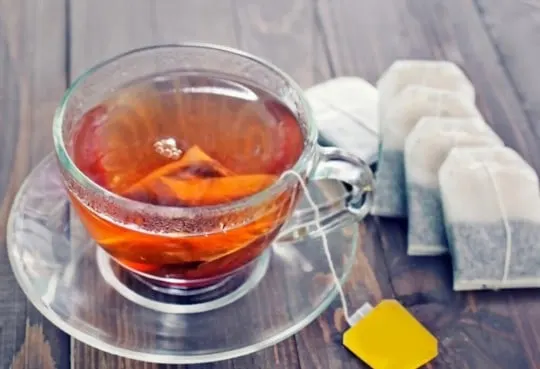
Both loose leaf tea and tea bags are a popular choice for enjoying tea in different forms.
One of the similarities is that both are made from the same Camellia Sinensis plant.
Both come in various flavors such as black, green, white, and herbal teas.
Furthermore, they can be served hot or cold, depending on individual preferences.
Additionally, another similarity between the two is their convenience factor.
Both options require minimal preparation time and can be steeped inside a teapot, cup or mug.
This allows individuals to enjoy a cup of tea without spending long hours prepping.
However, there are other details worth mentioning.
While tea bags typically have smaller leaves allowing quicker infusion times, loose leaf teas offer more flavorful and aromatic blends due to larger leaves that unfurl during steeping process.
Loose leaf teas tend to stay fresher longer than tea bags due to the packaging process which can affect the quality of bagged teas.
In summary, while there may be both similarities and differences between loose leaf tea and tea bags – both choices provide convenience in preparation and enjoyable taste experiences.
Nonetheless, personal preference plays a key role in determining which option is best for you when deciding on buying either loose leaf or bagged teas at the store.
Health Benefits of Loose Leaf Tea and Tea Bags
When it comes to the numerous health benefits of consuming tea, there’s often a debate between loose leaf tea and tea bags.
Let’s discuss the benefits of both options without mentioning any headings.
- Both types provide various health benefits. Loose leaf teas tend to have more antioxidants and polyphenols than their bagged counterparts as they contain larger leaves or buds. However, tea bags are usually created from smaller pieces of tea which can lead to a more concentrated brew with fewer antioxidants.
- As loose leaf teas are larger than those found in tea bags, they tend to have more natural essential oils that contribute to their unique flavor profile. On the other hand, many people opt for teabags due to convenience and simplicity.
Finally, choosing the best option ultimately comes down to individual preference based on factors such as brewing ritual, convenience, taste preference and caffeine content.
Keep in mind that whichever option is chosen when savoring your next cup of tea both styles offer nutritional value irrespective of their differences.
How to Brew Loose Leaf Tea and Tea Bags
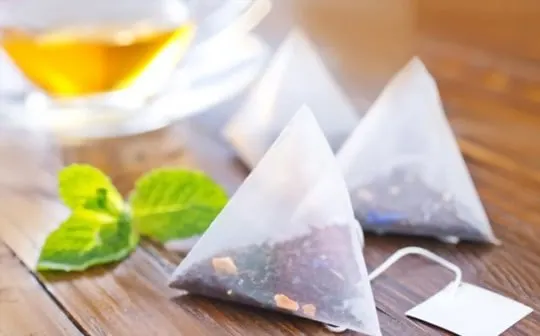
To create the perfect cup of tea, one must know the appropriate way to brew both loose leaf tea and tea bags.
Here is a simple and effective guide for brewing both types as per their requirements.
- Boil water — 150mL for one cup — with a temperature ranging from 90°C (194°F) to 100°C (212°F).
- Tea Bags — Place a tea bag in your cup and pour boiling water over it. Let it steep for 3 minutes, or until you get your desired strength. Remove the bag and enjoy.
- Loose Leaf Tea — Place loose-leaf tea into an infuser or strainer and place it in your cup. Pour hot water over top of the leaves; let it steep for 2-5 minutes depending on desired strength.
- Remove the infuser/strainer and discard leaves. Add milk/sugar/honey if required.
- Enjoy your hot cup of either a refreshing herbal blend or exotic loose-leaf tea among many others.
One must remember that using water with temperature outside of the suggested range might lead to under-extracting or over-extracting, hence causing bitterness or weak taste respectively.
Lastly, keep in mind that each variety of tea requires different infusion times and temperatures for optimal brewing results.
Where to Buy Loose Leaf Tea and Tea Bags?
When it comes to buying loose leaf tea and tea bags, there are several options available.
Here is a rundown of where you can purchase both types of tea in a variety of formats and flavors.
- Supermarkets: Most supermarkets carry a large selection of both loose leaf tea and tea bags. Check the tea aisle for popular brands like Twinings, Bigelow, and Lipton.
- Specialty stores: For a wider variety of options, consider visiting specialty stores that specialize in teas. You may find unique blends or high-end options that aren’t available at your local supermarket.
- Online retailers: Many online retailers specialize in selling tea, making it easy to order loose leaf or tea bags from the comfort of your home. Some popular online shops include Adagio Teas, Harney & Sons, and David’s Tea.
- Farmer’s markets: If you prefer locally sourced teas or want to support small businesses, check out farmer’s markets in your area. Many vendors sell their own blends of loose leaf teas or packaged tea bags.
It’s worth noting that some loose leaf teas can be more expensive than their bagged counterparts due to their higher quality.
However, many people enjoy the stronger flavor and aroma of loose leaf tea and feel that it’s worth the extra cost.
When purchasing either type of tea, consider factors like flavor preferences, brewing methods, and packaging options (such as compostable pouches or tins).
With so many options available on the market today, there’s sure to be a type of loose leaf or bagged tea that meets your needs and tastes great too.
Conclusion
To summarize, buying either loose leaf tea or tea bags is a personal preference.
When it comes to taste, both options provide great flavor for the different types of teas.
Aside from taste and aroma, there are much more factors to consider such as convenience, cost-effectiveness and health benefits.
Loose leaf tea has many advantages like its longevity; it can be steeped multiple times with its flavor gradually improving.
On the other hand, tea bags contain greater concentrations of caffeine over their loose leaf counterparts.
Ultimately, the choice between loose leaf tea or tea bags is up to you and your specific needs as a consumer.
Therefore choose wisely as they are both good in their own respects and may make all the difference depending on what best suits each individual scenario.
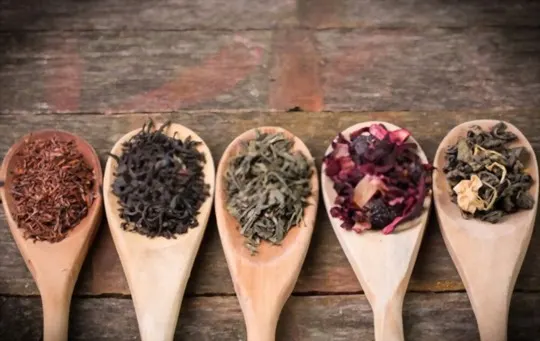
Loose Leaf Tea vs Tea Bags: Which is a Better Option?
Ingredients
- Loose Leaf Tea
- Tea Bags
Instructions
- Choose between two items based on your preference and availability.
- Follow the cooking directions for your chosen option, using the appropriate ratio of ingredients.
- Prepare it according to your desired recipes.
- Incorporate them into your dish, adjusting the amount to suit your taste.
- Enjoy the unique taste experience and experiment with different dishes to explore their versatility.

Andrew Gray is a seasoned food writer and blogger with a wealth of experience in the restaurant and catering industries. With a passion for all things delicious, Andrew has honed his culinary expertise through his work as a personal chef and caterer.
His love for food led him to venture into food writing, where he has contributed to various online publications, sharing his knowledge and insights on the culinary world. As the proud owner of AmericasRestaurant.com, Andrew covers a wide range of topics, including recipes, restaurant reviews, product recommendations, and culinary tips.
Through his website, he aims to inspire and educate fellow food enthusiasts, offering a comprehensive resource for all things food-related.
